My PC is fully functional and I've entered the bios multiple times through windows recovery settings, but since I installed my new gpu when I go to load the bios it restarts but nothing displays, ion get why.
Recently, many Windows users in Reddit have reported that facing PC won't boot to BIOS black screen in Windows 11/10/8/7 when they try to access BIOS. This error usually occurs in systems with dual GPU. The error is confusing as it does not display anything on the screen and becomes frustrating to be resolved.
But if you face the same issue, this article shows the best ways to fix PC won't boot to BIOS error in Windows 11/10/8/7. Stay tuned and try out the given ways!
Part 1: Can't Enter BIOS Windows 11/10/8/7?
Part 2: What Causes the PC won’t Boot to BIOS or Windows Error?
Part 3: How to Fix PC won’t Boot from BIOS?
- Solution 1: Detach CMOS
- Solution 2: Access through UEFI Firmware Settings
- Solution 3: Check for Faulty RAM
- Solution 4: Turn off Fast Startup Setting in Control Panel
- Solution 5: Check Bootable Media
Part 4: What is BIOS, and what can BIOS do?
Part 5: Extra Tip – How to Fix PC that won't Boot?Hot
FAQs
Part 1: Can't Enter BIOS Windows 11/10/8/7?
BIOS (Basic Input Output System) is a firmware that performs the basic operations before loading the operating system when you start your PC. Before the OS is loaded, the BIOS performs the POST test to ensure no hardware-related issues exist. If no issue is found, it signals the system to load the OS by loading the bootloader.
Generally, you do not need to access the BIOS, but sometimes you need to access it to configure a new device or change advanced PC settings, but you encounter PC won't boot to BIOS error.
Do you know how to resolve this error? If not, find out in the following parts.
Part 2: What Causes the PC won’t Boot to BIOS or Windows Error?
Various factors can contribute to PC won’t boot to BIOS or Windows error, such as:
- A faulty RAM
- Misconfigured UEFI settings
- Defective CMOS cell
Other causes include hardware issues, incorrect boot order, secure boot, etc.
Part 3: How to Fix PC won’t Boot from BIOS?
Solution 1: Detach CMOS
CMOS cell powers the BIOS and stores the basic instructions to run it. Resetting it can resolve the computer won’t boot to BIOS problem. However, this solution is not recommended for Windows 10 users.
Step 1. Shut down your system properly and plug out the power cable.
Step 2. Open your CPU case if you are on the desktop or backside of your laptop and remove the battery.
Step 3. Now, look for the CMOS cell and remove it.
Step 4. Wait for 5 to 10 minutes before placing it back.
Step 5. Attach the power source/battery to your system and turn it on.
Check if you can boot to BIOS or not.
Solution 2: Access through UEFI Firmware Settings
You can use the UEFI settings to access the BIOS quickly. First, boot your system to Windows, and follow the steps below to access UEFI firmware:
Step 1. Open Settings, click Update & Security.
Step 2. Click the Restart Now button under Recovery options.
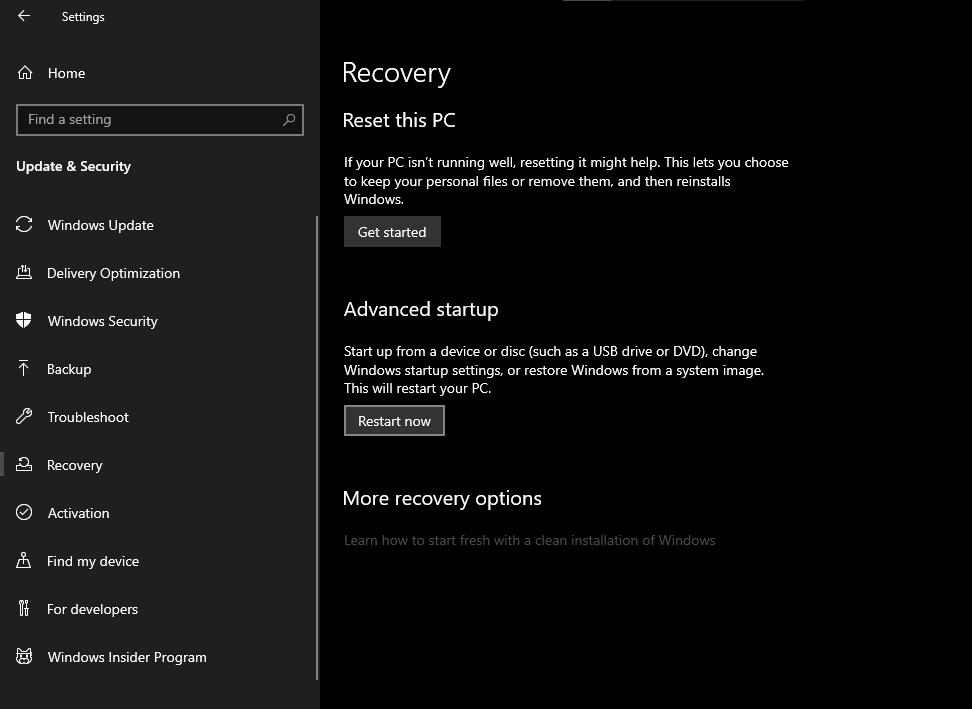
Step 3. Click Troubleshoot on Choose an option screen.
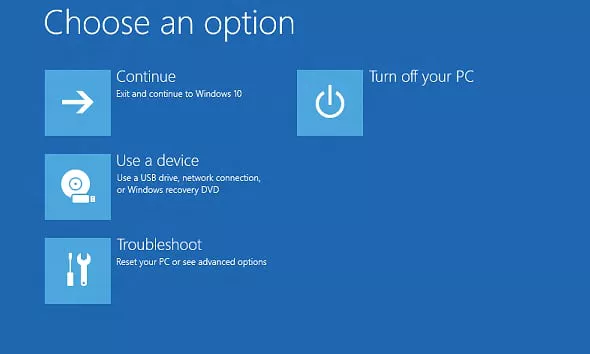
Step 4. Go to Advanced options and select UEFI Firmware Settings.
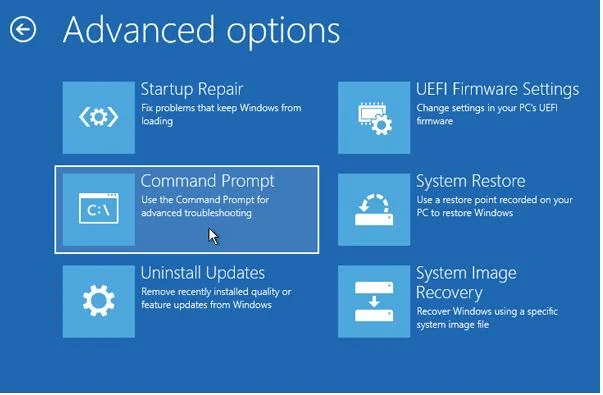
Your system will restart once again and boot to BIOS automatically.
Solution 3: Check for Faulty RAM
A faulty RAM is a major culprit behind the PC won’t boot to BIOS or Windows error. If you have multiple RAMs and RAM slots, we recommend you check those for faults as follows:
Step 1. Plug out all your system's power sources, including laptop batteries.
Step 2. Open the casing of your system and locate the RAM slots on the motherboard.
Step 3. Remove all the RAMs, clean them, and place them back in the slots.
Step 4. Restart your system and check if it fails to boot into BIOS or OS.
Step 5. If the error persists, repeat steps 1 to 3.
Step 6. Place a single RAM in any slot and check your system for errors.
Step 7. If you see no error, repeat the same for the rest of the RAMs until you find the faulty one.
Solution 4: Turn off Fast Startup Setting in Control Panel
The Fast Startup feature accelerates the startup process by stopping Windows from performing unnecessary tasks upon startup. Although this makes your system fast, it causes issues like stopping the BIOS startup from functioning on your PC and causing the PC won’t boot to BIOS error. However, you can disable this feature through Control Panel as follows:
Step 1. Search the Control Panel in the search box and choose the first option.
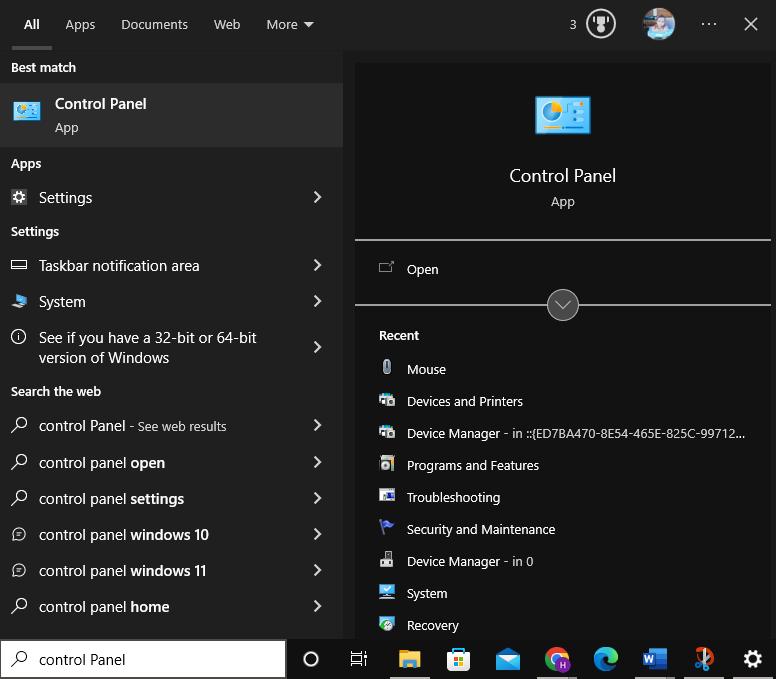
Step 2. Click Hardware and Sound link.
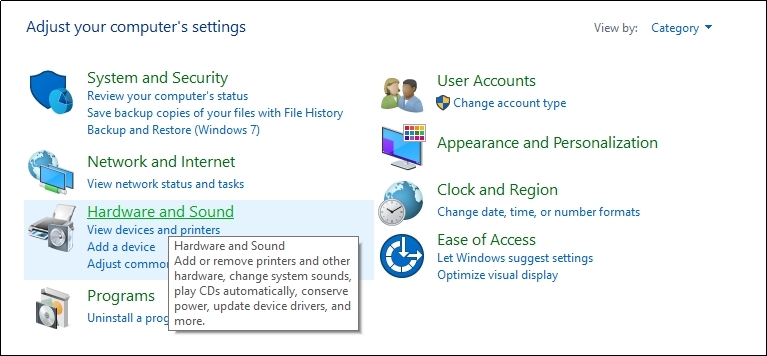
Step 3. Click on the Choose what the power buttons do link.
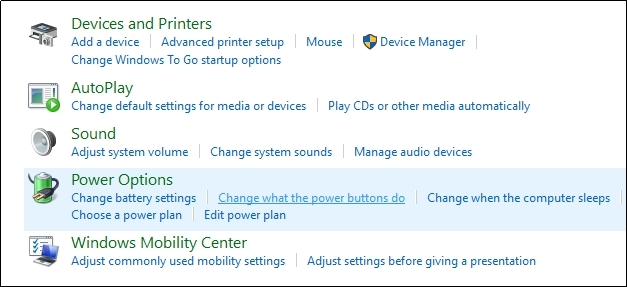
Step 4. Click Change settings that are currently unavailable link.

Step 5. Deselect Turn on Fast Startup (recommended) under Shutdown settings.
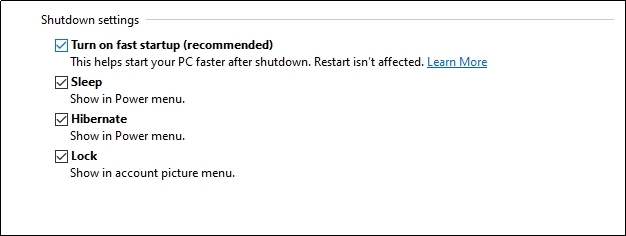
Step 6. Click on the Save changes button and restart your computer.
When your system restarts, try to boot into BIOS.
Solution 5: Check Bootable Media
If your bootable media has some problem, your PC may fail to boot beyond BIOS. When you see a blue/black screen accompanied by any of the following error messages, know that your boot drive is corrupted:

In such a case, you must recreate a bootable drive or set the appropriate bootable device on boot priority.
Part 4: What is BIOS, and what can BIOS do?
The BIOS is a small chip attached to the motherboard containing instructions to give you access to the most basic system settings. It works like a middleware between the OS and the hardware it cooperates with, and it controls the data flow between OS and peripheral devices. It is also responsible for starting the computer after you turn it on as it contains the boot loader.
Besides loading the OS, BIOS performs various other tasks that must be performed before your PC starts up, such as:
- POST (Power On Self Test): This test ensures that all the hardware is working fine before the BIOS loads the OS. If this test fails, your system does not boot to BIOS or Windows, and you hear the beep sounds with an error message displayed on the screen.
- Bootstrap Loader: It is a small program that locates the OS, and BIOS passes the control to it if it finds a capable OS.
- BIOS Drivers: These drivers are responsible for providing the system with basic operational control over the system’s hardware.
- CMOS: It is a small semi-conductor battery that powers the BIOS and stores basic settings like date, time, and passwords.
Part 5: Extra Tip – How to Fix PC that won't Boot?Hot
You may feel troubled if your PC is stuck on the boot screen and can’t enter BIOS, but there is nothing to worry about when PassFab FixUWin is here to rescue you!
PassFab FixUWin is the most recommended Windows repair tool that fixes 200+ Windows errors. With its state-of-the-art technology, this tool scans your system to identify the errors' root causes and mitigate them. It can resolve the basic as well as the most stubborn errors in just a few clicks. You can also use this amazing tool to fix the PC won’t boot error.
Besides resolving Windows errors, PassFab FixUWin allows you to perform computer management tasks and help you manage your resources efficiently through its partition management, password management, data recovery, data wipe and backup and restore features.
The best thing about PassFab FixUWin is that it is a comprehensive tool with many useful features. Its simple interface makes it equally useful for novice and expert computer users. Moreover, it supports all Windows versions and modern PC brands. With a 100% success rate, it has earned quite a reputation in the market; therefore, we recommend that you use this outstanding tool to resolve Windows errors conveniently.
FAQs:
1. Can update BIOS solve the problem?
Updating the BIOS may help if you are setting up a new PC or have an old motherboard. However, it will not work if your PC was working fine previously but started malfunctioning.
2. How to update or reset BIOS if PC won’t boot?
The BIOS update process depends upon the manufacturer, and you should refer to the manufacturer's website to update it. However, resetting can be performed by simply unplugging and plugging the CMOS battery.
3. How to get into BIOS when PC won’t boot?
You can get into BIOS when PC won’t boot by using the UEFI Firmware Settings, disabling the Fast Startup feature, and checking the bootable media as described in this article.
Conclusion
When your PC won’t boot to BIOS, you cannot access the basic PC settings and configure new hardware, such as a GPU. This article defines different workarounds if you can’t enter BIOS Windows 11/10/8/7. We have also suggested the best Windows repair tool to resolve 200+ Windows errors, i.e., PassFab FixUWin.